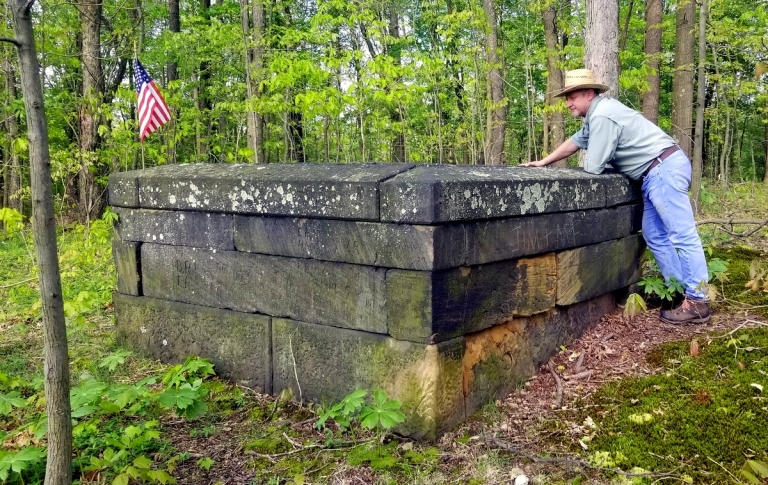
NEW MANCHESTER, W.Va. — Some say that the ghost of Judge John Hoke Reddick still haunts his grave, and that's not hard to believe, given its remarkable nature. The judge had himself buried in two states—half in Virginia (now West Virginia) and half in Pennsylvania.
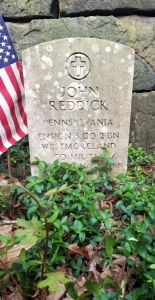
Though the state boundary has shifted slightly west since he was interred, there's not much doubt that, by design, the grave once lay on or near the border, now marked with ancient rocks and modern blazes. Who was Judge Reddick?
According to local legend, he was the kind of man who would make a deal with the devil and use the law to trick the devil out of the bargain. According to one variant, the devil himself transformed Reddick into a tremendous gray stallion. This he still rides on stormy nights over the hills that rise along the Ohio Valley.
The version in which the judge prevails is always a favorite. It's said that the judge's body was laid with its feet in Pennsylvania and its head in his native Virginia, facing east, in an open-ended chestnut coffin.
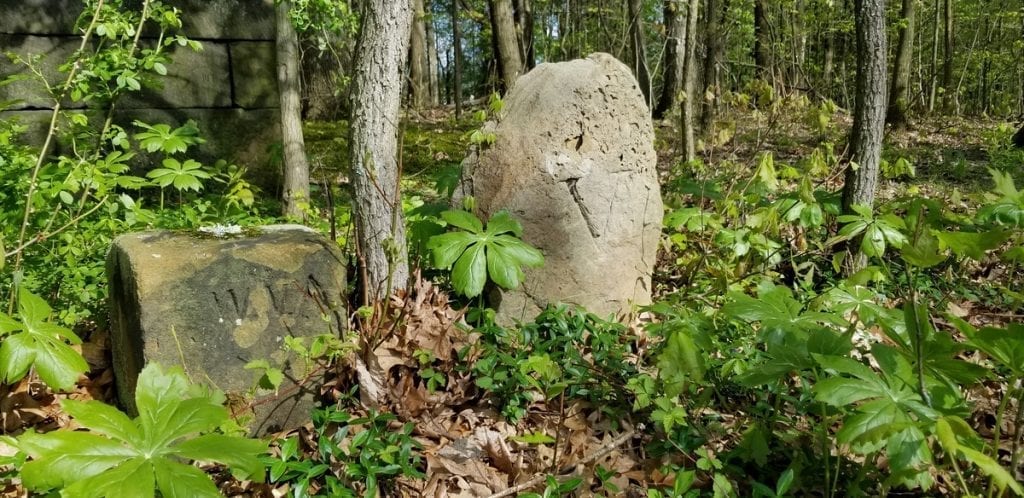
The judge had hoped that when the devil came, he could claim residency in two states and complicate the infernal claim with dual extradition procedures.
In his book “Legends and Lore of Western Pennsylvania,” Thomas White wrote that Reddick was known for being a fair judge, encouraging settlements acceptable to all parties." He was one of three associate justices appointed when Beaver County was created in 1800 and served on the bench from 1804 to 1830, when he died.
Reddick was also a veteran of the Revolutionary War and served as a colonel of the Westmoreland County militia in the War of 1812.
But reading the law wasn't the judge's chief interest, White said. Horse-racing was. Reddick built a racetrack, hosted races, and raced as well. He once boasted that "not even the devil could beat him in a race."
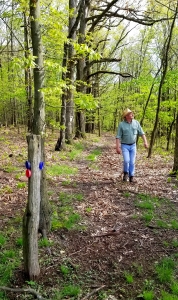
According to the legend, his body was buried according to his instructions in a special coffin buried squarely on the state line.
When the devil arrived, the ghost demanded a writ of extradition, claiming the devil lacked jurisdiction in Pennsylvania.
Enjoying the duel of wits, the devil obtained a warrant in Harrisburg, only to find that Reddick had shifted to the other side of the coffin and into Virginia. The statute of limitations eventually expired, and Reddick was left to rest peacefully.
White notes that two unforeseen circumstances might have upset the judge's plans.
In 1882-83, the line was moved after West Virginia separated from Virginia, and the tomb now lies 10 feet inside Pennsylvania, he said.
"The other is that about 30 years ago, the Hookstown American Legion Post arranged for a marble military marker to be placed on the grave," White wrote. "There’s no hiding from the Devil now—no need for joint writs of extradition."
The grave is located along the western edge of what had been the Reddick farm in Hanover Township, Pa., now off Hardin Run Road in Hancock County, West Virginia.
For more information on access to the trail, contact the Beaver County Historical Society, members of which intermittently guide tours to the landmark. You can learn more about the legend from Mark Grago in Beaver County (Pa.) Hauntings.
Sign up for a FREE copy of West Virginia Explorer Magazine in your weekly email. Sign me up!








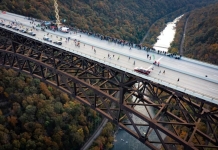


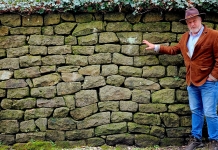
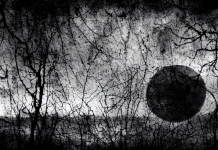

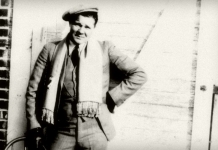
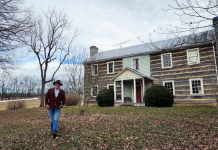
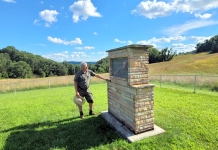












Facebook Comments